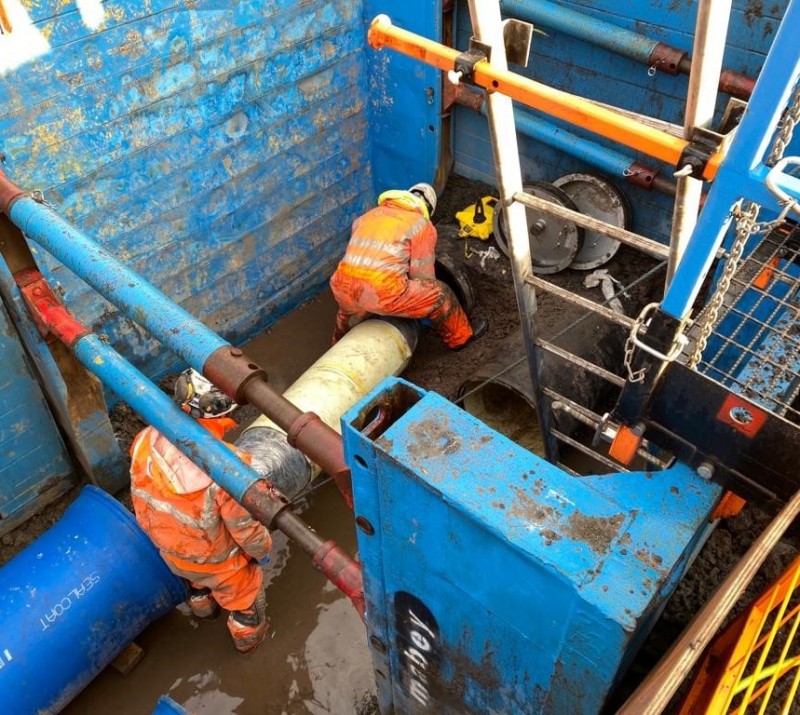Lanes team endures ‘biblical’ deluge to install liners against the clock

A sewer lining team from Lanes Group plc has overcome some of the wettest conditions on record to help complete a project in time for construction to begin on a pedestrian bridge.
Lanes had been commissioned to install mini liners by water engineering specialist Fastflow Pipeline Services, a subsidiary of United Living Infrastructure Services, working on behalf of main contractor BAM Nuttall.
Its drainage engineers endured heavy rain, freezing temperatures and extremely muddy conditions to install 83 patch liners in two 600mm diameter pipes carrying water from the Monklands Canal in Glasgow.
The pipes had to be strengthened to withstand the effects of piling due to be carried out just a few metres away at the start of construction of the new pedestrian bridge over the M8 motorway.
Lanes Group’s sewer renovation and lining division put in place a quality control system it had developed for the nuclear industry to meet exacting standards needed by BAM Nuttall, which was building the bridge for Glasgow City Council.
Its team worked 12-hour shifts to complete task of installing the 1.2m-long patch liners in the two pipes that take canal water under the M8 and into the canal on the other side of the motorway.
The installation was completed on time despite finding on day six of the 10-day project that an extra 15 metres of pipe would have to be lined.
It had not been possible to install full length liners, either with hot water cure in place pipe (CIPP) lining or ultraviolet light CIPP lining because the next available manhole was more than 300 metres from the access point.
Drew O’Rourke, Contract Manager, of Fastflow Pipeline Services, said: “Working with the teams at Lanes was a pleasure despite the unquestionably hard challenges the weather sent our way.
“Through effective partnering, we were able to deliver for our customer whilst maintaining our outstanding safety culture, completing work with an untarnished safety record on time and to are usual exacting standards of quality.”
Lanes Business Development Manager Paul Henderson said: “This was a project where the challenges came thick and fast at every stage, from planning to completion.
“The rainfall during the installation was biblical and among the most persistent on record. Our operatives were working in quagmire conditions, making site safety all the more important.
“Our quality system and the skill and experience of the team meant we could maintain and fully document excellent installation standards every step of the way despite the difficult conditions.
“The success of the project was built firmly on close partnership working with Fastflow Group to develop a safe system of work, plan the best lining solution and drive through implementation safely and on deadline.”
The patch liners, made up of layers of glass reinforced fibre (GRF), had to be 5mm thick instead of the standard 3mm. They also had to overlap by precisely 100mm to achieve the strength needed for the required 50-year design life.
Each patch liner was impregnated with resin and wrapped around a rubber packer before being pushed up to 26 metres into one of the pipes by a team of four operatives using a flexible rod.
The packer was then inflated with compressed air, pushing the patch liner against the pipe. Once the resin had cured, the patch created a new pipe within a pipe. A key challenge was to gradually lengthen the curing times of the resin as the liners were installed further up the pipes.







